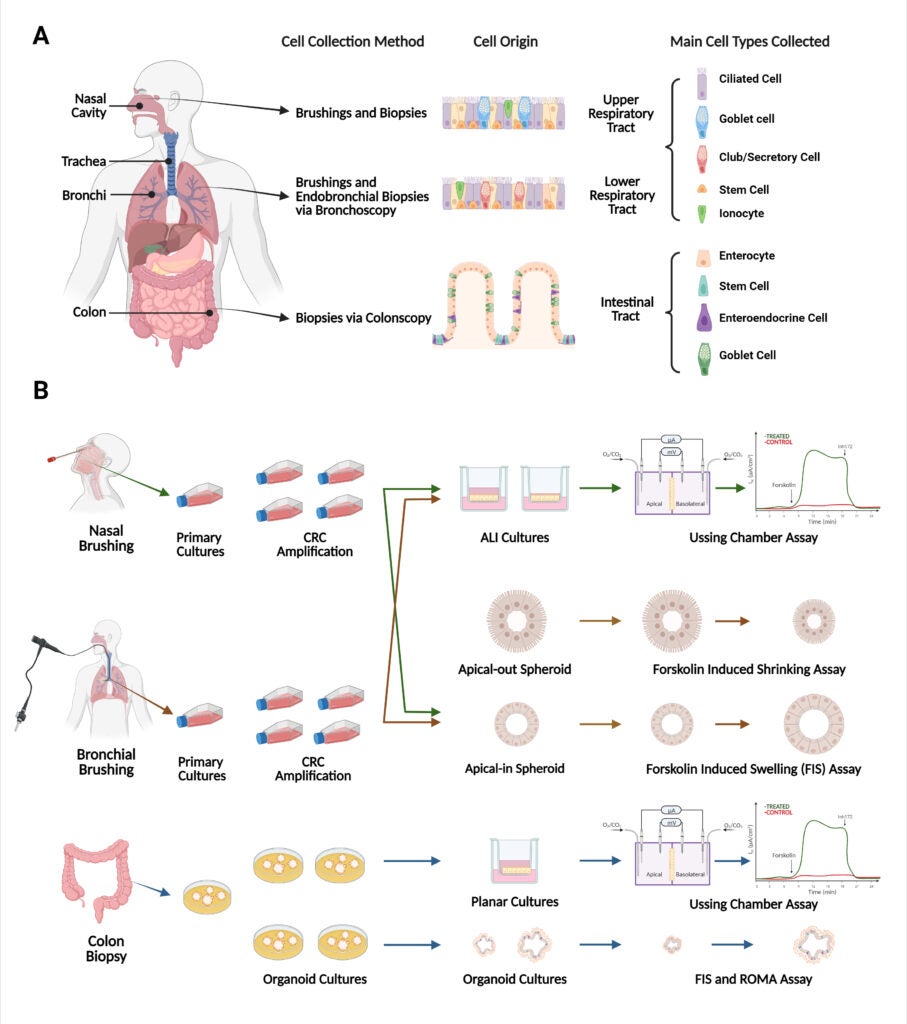Personalized Medicine
Human Cystic Fibrosis (CF models) for personalized medicine that are utilized in the Gentzsch lab. A. Illustrations of cell collection for patient-derived models. B. Cartoon depicting culturing and standard assays for nasal, bronchial, and GI/rectal 2D and 3D patient-derived cell models. Modified from Ramalho AS, Amato F, Gentzsch M. J Cyst Fibros. 2023 Suppl 1:S32-S38. (Click image to enlarge)
Because of the multitude of mutations both in the CFTR protein itself and ancillary proteins that may impact CFTR’s function, a simple one drug fits all approach is not viable. Research has produced multiple small molecule compounds that can influence the different mutations and classes.
The aim of personalized medicine is to tailor specific treatments and therapies toward the individual. This focused therapeutic approach has multiple benefits including cost savings (by reducing the number of drugs required to treat the patient) and provides a more effective treatment regime by identifying which small molecule therapy combination induces the most robust response in the test system.
This is achieved by isolating cells from the patient (Figure A) and then processing them by expansion and creating monolayers for use in Ussing chambers or creating spheroids or organoid cultures (Figure B). Once a model is developed, different drug combinations can used to treat the cells and measure their impact on cell current (Ussing and bilayer studies) and fluid transport (organoid\spheroid swelling).
